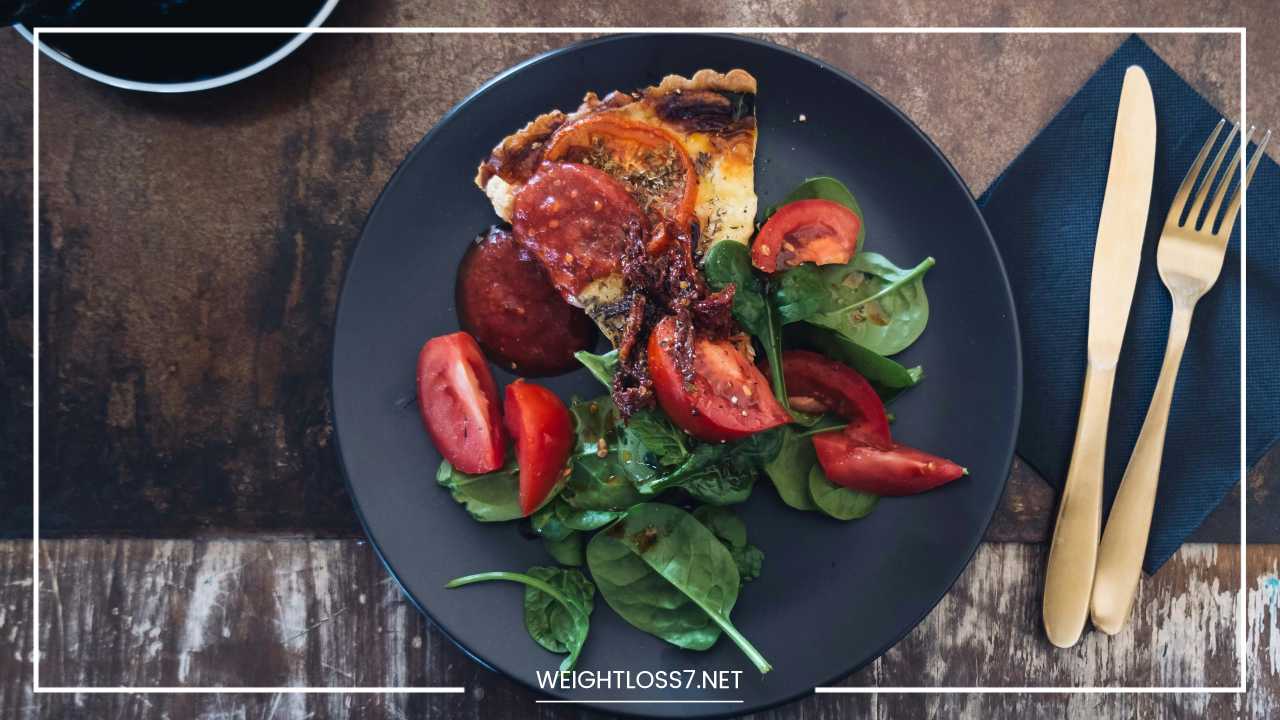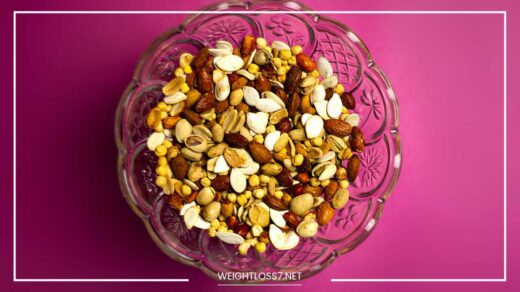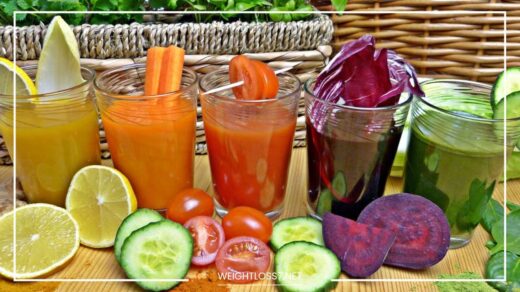How to Reduce Weight: Easy Tips for Healthy Habits

How to Reduce Weight
How to Reduce Weight With Sustainable Habits (and Ditch the Crash Diet)
Crash diets might promise quick results, but they often leave you feeling deprived, cranky, and ultimately unsuccessful. Shedding pounds for good is about creating sustainable habits that seamlessly integrate into your lifestyle, not about white-knuckling your way through a temporary fix.
This comprehensive guide will equip you with the knowledge and easy-to-implement strategies to reach your weight loss goals, all while feeling energized, empowered, and in control. Remember, this is a journey, not a race. Let’s focus on progress, not perfection!
Making Sustainable Swaps in Your Diet
Befriend Fiber: The Ultimate Ally
Fiber is your secret weapon in the weight loss battle. It keeps you feeling fuller for longer, reducing cravings and preventing overeating. Here’s how to make fiber your friend:
- Fill Your Plate with Plant Power: Focus on incorporating a variety of fruits, vegetables, and whole grains into every meal. Leafy greens like kale and spinach are packed with fiber, along with vitamins and minerals. Don’t forget about colorful fruits like berries, which are naturally sweet and satisfying. Whole grains like oats, quinoa, and brown rice provide sustained energy and keep you feeling fuller for longer.
- Legume Love: Beans, lentils, and chickpeas are fantastic sources of fiber and protein. Explore different varieties and incorporate them into soups, salads, stews, or even veggie burgers.
- Snack Smart: Instead of reaching for processed snacks, grab a handful of almonds, walnuts, or dried fruits like figs and dates. These provide a satisfying crunch, healthy fats, and a good dose of fiber.
Protein Power: Building Blocks for Success
Protein is a vital building block for your body. It helps with muscle growth and repair, which in turn boosts your metabolism and helps you burn more calories at rest. Here’s how to make protein a key part of your diet:
- Choose Lean Sources: Chicken, fish, turkey, and lean cuts of beef are excellent protein options. Don’t forget about plant-based protein sources like tofu, tempeh, and lentils. They’re a heart-healthy and versatile way to add protein to your meals.
- Spread it Out: Aim to include a moderate amount of protein at every meal and snack. This helps regulate appetite and keeps your metabolism fired up throughout the day.
- Get Creative: Explore different ways to incorporate protein. Try a protein smoothie for breakfast, add grilled chicken to your salad, or whip up a veggie chili with lentils and beans.
Portion Control: Mastering the Art of “Just Enough”
It’s easy to underestimate portion sizes, especially when faced with tempting dishes. Here are some tips to master the art of portion control:
- Downsize Your Dishes: Use smaller plates, bowls, and glasses. This creates the illusion of a larger portion and helps you feel satisfied with less food.
- Measure It Out: Especially when starting, use measuring cups and spoons to get a handle on appropriate portion sizes. This will help you train your eye to recognize a realistic serving.
- Mindful Serving: Serve your food directly on your plate instead of having serving platters on the table. This prevents the temptation to go back for seconds.
- Listen to Your Body: Eat slowly and pay attention to your hunger and fullness cues. Stop eating when you’re comfortably satisfied, not stuffed.
H2O is Your Hero: Staying Hydrated for Weight Loss
Water is essential for overall health, and it plays a crucial role in weight loss too. Here’s why:
- Curbs Cravings: Sometimes, thirst can be mistaken for hunger. Drinking plenty of water throughout the day can help you avoid unnecessary snacking.
- Boosts Metabolism: Studies suggest that even mild dehydration can slightly decrease your metabolism. Staying hydrated ensures your body functions optimally, potentially aiding in weight loss.
- Aids Digestion: Water helps break down food and keeps your digestive system functioning smoothly. This is crucial for efficient nutrient absorption and waste elimination.
Sweet on Fruit (Not Added Sugars): Nature’s Candy
Swap sugary treats for nature’s candy – fruits! Here’s how to satisfy your sweet tooth with healthy options:
- Fresh is Best: Whenever possible, choose fresh fruits. They’re packed with vitamins, minerals, and fiber, making them a satisfying and nutritious snack.
- Frozen Fruits: Frozen fruits are a great option for smoothies, yogurt parfaits, or simply enjoying on their own. They’re typically flash-frozen at peak ripeness, retaining most of their nutrients.
- Baked Apples: For a warm and comforting treat, bake an apple with a sprinkle of cinnamon. It’s a delicious and healthy alternative to sugary desserts.
Mindful Munching: Eating with Awareness
Mindless snacking while watching TV or working at your desk can easily lead to overconsumption. Here’s how to practice mindful eating and make your meals more satisfying:
- Create a Calm Environment: Sit down at a table, away from distractions, and focus on your food. Put your phone away and savor the experience.
- Engage Your Senses: Pay attention to the colors, textures, and aromas of your food. Appreciate the effort you put into preparing it.
- Chew Thoroughly: Take your time and chew each bite slowly. This allows your body to register fullness cues and helps with better digestion.
- Put Down Your Utensils: Avoid taking bites in between putting your fork or spoon down. This allows you to pace yourself and avoid mindless eating.
Reading Food Labels: Decoding the Mystery
Food labels can be a powerful tool in making informed choices. Here’s how to decipher the information and make healthy selections:
- Focus on Serving Size: Pay close attention to the serving size listed. It’s easy to underestimate how much you’re actually consuming.
- Calories Matter, But Not Everything: While calorie intake is important, it’s not the only factor. Look at the overall nutritional profile, including fat content, sugar content, and fiber content.
- Beware of Added Sugars: Added sugars can sneak into many processed foods. Look for products with low added sugar content or opt for natural sweeteners like stevia or monk fruit.
- Choose Whole Foods Over Processed: Generally, whole foods like fruits, vegetables, and lean proteins have a simpler ingredient list and are less likely to be loaded with added sugars, sodium, and unhealthy fats.
Spice Up Your Life: The Metabolism Boost
Spices add flavor and dimension to your meals, but they can also offer surprising health benefits. Here’s how incorporating spices can aid in weight loss:
- Heat It Up: Chili peppers contain capsaicin, a compound that can boost metabolism and increase calorie burning. Experiment with cayenne pepper, chili flakes, or sriracha sauce.
- Spice Synergy: Certain spices like cinnamon and turmeric have been shown to regulate blood sugar levels, which can help control cravings and prevent weight gain.
Simple Yet Effective Exercise Strategies
Find Activities You Enjoy: Movement Should Be Fun!
Exercise shouldn’t feel like a chore. The key to consistency is finding activities you genuinely enjoy. Here are some ideas to get you started:
- Dance it Out: Put on your favorite music and dance freely in your living room. There are even fun online dance workouts for all fitness levels.
- Explore the Outdoors: Go for a walk, hike, or bike ride in nature. Immersing yourself in green spaces has additional benefits for stress reduction and mental well-being.
- Team Up: Join a sports team or fitness class. The social aspect and camaraderie can boost motivation and make exercise more enjoyable.
- Try Something New: Take a yoga class, try a Zumba session, or learn to swim. Stepping outside your comfort zone can keep things interesting and prevent exercise routines from becoming monotonous.
Start Small & Build Up: Consistency is Key
Don’t overwhelm yourself by trying to go from couch potato to gym rat overnight. Here’s how to create a sustainable exercise routine:
- Begin with Manageable Workouts: Start with short, achievable workouts, like 15-20 minutes a few times a week. Gradually increase the duration and intensity as your fitness improves.
- Find a Schedule that Works: Schedule your workouts in your calendar and treat them like any other important appointment. Consistency is crucial for seeing results.
- Listen to Your Body: Don’t push yourself too hard, especially when starting. Take rest days when needed and allow your body to recover.
Make it a Daily Habit: Sneak in Movement Throughout Your Day
Every little bit of movement counts! Here’s how to incorporate activity into your daily routine:
- Take the Stairs: Skip the elevator and take the stairs whenever possible.
- Park Further Away: Challenge yourself to park further away from your destination and walk a bit more. Every step adds up!
- Commercial Breaks are for Moving: Get up and do some jumping jacks, squats, or stretches during commercial breaks while watching TV.
Embrace Strength Training: Building Muscle for Long-Term Benefits
Strength training helps you build muscle mass, which not only improves your physique but also boosts your metabolism. Here’s why strength training is a valuable addition to your routine:
- Burn More Calories: Muscle burns more calories at rest compared to fat. This means you’ll continue to burn calories even after your workout session, contributing to weight loss.
- Improved Bone Density: Strength training helps strengthen bones and reduce the risk of osteoporosis, especially important as we age.
- Increased Strength and Stamina: Regular strength training improves your overall strength and stamina, making daily activities easier and more enjoyable.
No Gym? No Problem! Bodyweight Exercises at Home
Don’t have access to a gym? No worries! Here are some effective bodyweight exercises you can do at home:
- Squats: A classic exercise that works your legs, core, and glutes. Simply stand with your feet shoulder-width apart, lower your body as if you’re going to sit in a chair, and then push back up to starting position.
- Lunges: Great for targeting your quads and hamstrings. Step forward with one leg, lower your body until both knees are bent at 90-degree angles, and then push back up to starting position. Repeat with the other leg.
- Push-ups: Modify them on your knees if needed. Push-ups work your chest, shoulders, and triceps. Start in a plank position with your hands shoulder-width apart and lower your chest towards the ground before pushing back up.
- Plank: This isometric exercise strengthens your core and back muscles. Start in a push-up position but rest on your forearms instead of hands. Keep your body in a straight line from head to heels and hold for as long as you can comfortably.
- Wall Sits: Strengthens your quads and core. Stand with your back flat against a wall and lower yourself down as if you’re sitting in a chair. Keep your core engaged and hold for as long as you can comfortably.
Prioritizing Sleep & Stress Management
Sleep is King (or Queen): Getting Enough Rest for Optimal Health
When you’re sleep-deprived, your body produces more ghrelin (the hunger hormone) and less leptin (the satiety hormone), making you crave more food and hindering weight loss efforts. Here’s how to prioritize sleep:
- Create a Relaxing Bedtime Routine: Wind down before bed with calming activities like reading a book, taking a warm bath, or practicing relaxation techniques like deep breathing or meditation.
- Establish a Consistent Sleep Schedule: Go to bed and wake up at the same time each day, even on weekends. This helps regulate your body’s natural sleep-wake cycle.
- Optimize Your Sleep Environment: Make sure your bedroom is dark, quiet, and cool for optimal sleep quality. Invest in blackout curtains, earplugs, and a comfortable mattress.
- Limit Screen Time Before Bed: The blue light emitted from electronic devices can interfere with sleep. Avoid using screens for at least an hour before bedtime.
De-Stress for Success: Managing Stress for Weight Loss
Chronic stress can lead to weight gain by elevating cortisol levels, a stress hormone that promotes fat storage. Here are some healthy ways to manage stress:
- Exercise Regularly: Physical activity is a natural stress reliever. Even moderate exercise like walking or yoga can significantly reduce stress levels.
- Mindfulness and Meditation: Mindfulness practices like meditation and deep breathing can help calm the mind and reduce stress. There are many guided meditation apps and online resources available.
- Spend Time in Nature: Immersing yourself in nature has been shown to reduce stress and improve mood. Take a walk in the park, hike in the woods, or simply sit outside and enjoy the fresh air.
- Connect with Loved Ones: Social support is crucial for managing stress. Spend time with friends and family who make you feel good and offer emotional support.
Beyond the Scale: Celebrate Non-Scale Victories
Weight loss isn’t just about the numbers on the scale. Here are some non-scale victories to celebrate along the way:
- Having More Energy Throughout the Day: As you lose weight and become more active, you’ll naturally have more energy to tackle your day.
- Feeling More Confident in Your Clothes: When you feel good in your clothes, it shows! Celebrate the way your clothes fit better and how you feel more confident in your own skin.
- Completing a Workout You Previously Found Challenging: As your fitness improves, you’ll be able to achieve things you thought were impossible. Celebrate these milestones and acknowledge your progress.
- Making Healthier Food Choices Consistently: Developing healthy habits takes time and effort. Celebrate your commitment to making positive changes in your diet.
Remember: Weight loss is a journey, not a destination. There will be setbacks along the way, but don’t let them discourage you. Embrace the process, celebrate your progress, and focus on building healthy habits that will empower you to reach your goals.

















